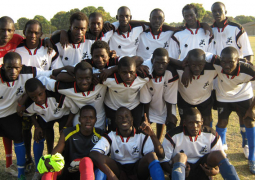The
lush landscape contrasts with the vast deserts that surround Senegal. The
country brings in more visitors than any other country in the region.
The
physical environment in the south is somewhat different than the northern
regions of Senegal. Largely as a result of higher annual rainfall the forest is
much more considerable in the Casamance.
Still
the year has very distinct wet and dry seasons. The forest, as a result of the
dry season, is more sub-tropical than jungle type forest, but still there are
some areas with very large, old trees and areas with palm trees and vines,
etc... The temperature in general is quite warm (between 30 - 40 degrees
Celsius) though in Dec. and Jan. at night it cools off enough to need a light
blanket.
The
causes of the conflict and its perpetuation are complex. Factors often cited as
contributors include historical factors, economic neglect, and lack of job
opportunities for youth, land rights issues, and disrespect for indigenous
cultural norms.
The
conflict has had negative effects on virtually every aspect of life in the
Casamance: the environment has degraded due to uncontrolled exploitation or
neglect, normal village life and social support systems have been disrupted,
poverty has increased, the cities are overcrowded, schools and health posts
have been closed or displaced, and investment and tourism have declined.
Senegal
is a moderately decentralized republic dominated by the Socialist Party, which
has held power since independence. President Abdou Diouf, who had been in
office since 1981, was succeeded in early 2000 by the newly elected president,
Abdoulaye Wade.
In
1996 the Socialist Party won control of all 10 regional governments and many
local governments in the country’s first subnational level elections, which
were marked by credible allegations of widespread fraud and procedural
irregularities, gerrymandering, illegal fundraising, and voter list
manipulations. Due in part to the flaws in these elections, the Government’s
decentralization program has had limited success in defusing the secessionist
rebellion in the Casamance region.
The
Casamance region is an important focus area for the economic development of
Senegal due in part to its rich tropical environment. The region is centrally
located to facilitate trade with neighboring countries and has some of the
largest traditional markets in Senegal. At one time, Casamance was also well
known as a major tourist destination in Senegal. Currently, a major constraint
affecting development in the Casamance region is its armed separatist struggle
that has lead to a sharp decline in the economic and social well being of the
population.
In
1982, supporters of the Mouvement des Forces Democratiques de la Casamance
demanded that the Govern-ment of Senegal grant independence to the Casamance
region, an isolated section of southwestern Senegal located between Gambia and
Guinea-Bissau. This demand sparked a two-decade-long conflict, which only
recently began to be resolved.
The
conflict worsened in the late 1990s with the appearance of anti-personnel and
anti-tank mines. These landmines have adversely affected the population,
agricultural activities and tourism, as well as hampering donor and NGO efforts
in the region. No accurate information is available regarding the total
quantity of landmines or the number of landmine casualties. Over the years,
hundreds of villages have been abandoned and schools and health centres have
closed. Hundreds of children and women have become victims of landmines and
risk of exposure to sexually transmitted infections (STIs) and HIV/AIDS has
increased due to population displacement, the presence of combatants and
increased poverty. The nutritional status of children has also deteriorated.
Fighting
between the Government of Senegal soldiers and rebels for the Movement of
Democratic Forces for the Casamance has adversely affected the potential of the
Casamance to contribute fully to the economy of Senegal. It is estimated that
the conflict has cut agricultural production by 50 percent. The tourism
industry has been devastated by the conflict with many of its 16,000 employees
being dismissed as a result of the continuing struggle. In addition, it is
estimated that thousands of refugees have fled Casamance to neighboring
countries such as Guinea-Bissau and The Gambia.
In
1997 a renewal of fighting in the Casamance area in the southern part of the
country between the Government and the secessionist Movement of Democratic
Forces in the Casamance (MFDC) caused many civilians to flee their villages.
While
there were no confirmed reports of political or extrajudicial killings by
government officials during the 1997 resurgence of violence in the southern
Casamance region, government forces were suspected of responsibility for many
civilian deaths. In August 1997 a leader of the MFDC, Sarani Badiane, was found
murdered near Ziguinchor. While no group claimed responsibility for the killing
and no direct proof of guilt has emerged, the Senegalese human rights
organization African Meeting for the Defense of Human Rights (RADDHO) and
Amnesty International (AI) attributed responsibility for Badiane’s death to the
Government.
Although
the leader of the MFDC, Abbe Augustine Diamacoune Senghor, remained free from
house arrest in 1997, his movements were controlled by the Government. The
Government reportedly blocked a trip by Diamacoune to France to meet with the
leader of the MFDC’s external wing to coordinate policy in peace talks with the
Government. After the killing of Sarani Badiane in August 1997, two of
Diamacoune’s remaining lieutenants sought refuge with Diamacoune who remained
in government custody at a church in Ziguinchor. The Government did not attempt
to hinder their joining Diamacoune, but in October 1997 expelled them from
Diamacoune’s quarters.
But
using our voices, exercising our power and demanding action can help save lives
in Cassamance NOW !!.
By:
Saidina Alieu Jarjou
Blogger/Activist



